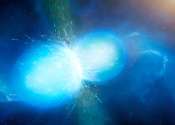Stunning new Hubble images reveal stars gone haywire
The NASA/ESA Hubble Space Telescope demonstrates its full range of imaging capabilities with two new images of planetary nebulae. The images depict two nearby young planetary nebulae, NGC 6302, dubbed the Butterfly Nebula, ...









